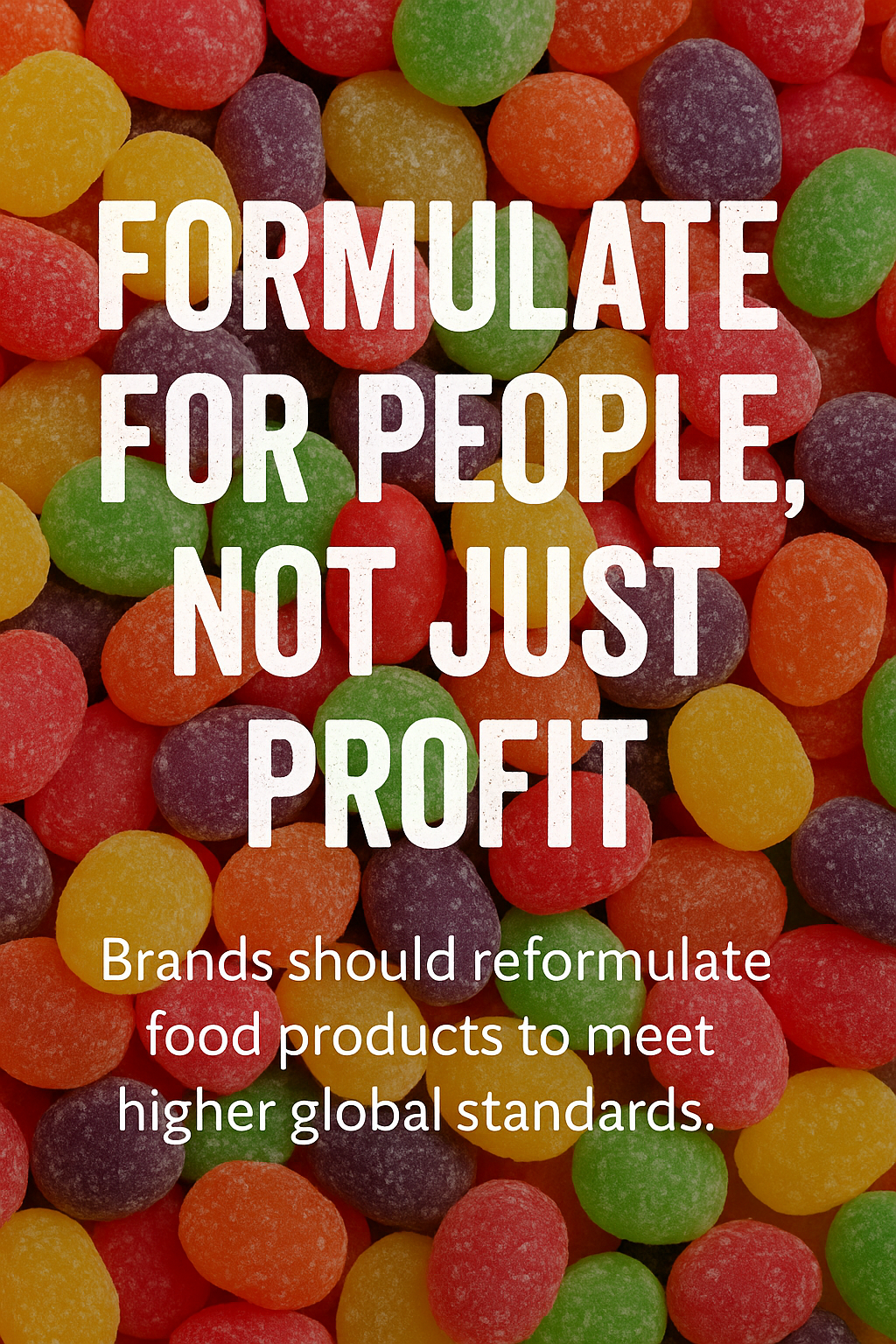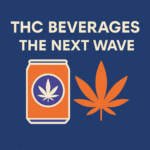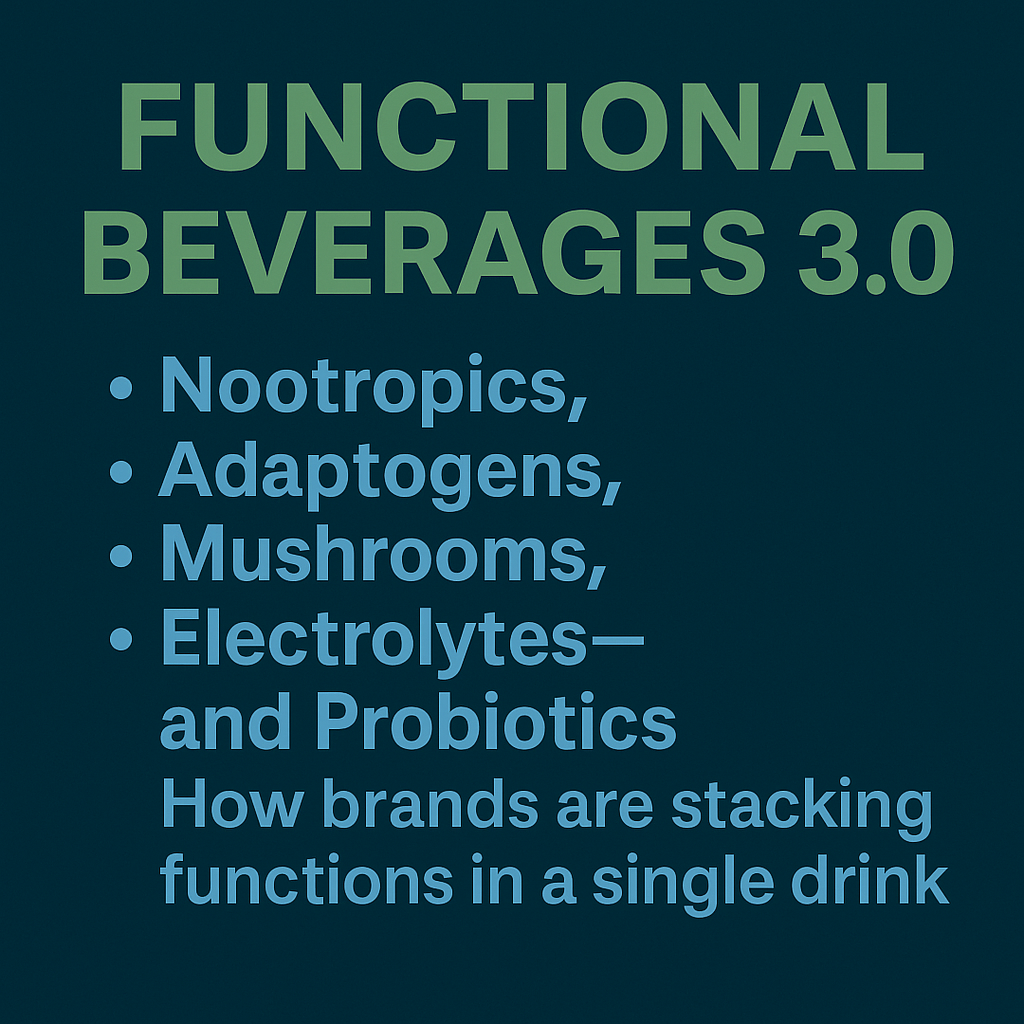The functional beverage space is evolving—fast. What started with protein shakes and vitamin waters has transformed into a sophisticated market…
Formulate for the Future: Why U.S. Food & Beverage Brands Should Rethink What’s Inside the Bottle (and the Box)
In today’s world, selling a food or beverage product isn’t just about taste, packaging, or price—it’s also about trust. Consumers are reading labels more closely than ever, and governments worldwide are tightening the rules on ingredients once considered harmless. While a product may pass U.S. FDA regulations today, tomorrow could be another story.
Forward-thinking brands should take a hard look at their ingredient lists and ask: Are we future-proofed—or just skating by until we’re forced to change?
Let’s take a closer look at ingredients you can still use in the U.S., but probably shouldn’t—because of looming FDA action, bans abroad, and growing consumer awareness.
1. Red Dye No. 3 – The Clock is Ticking
Used in: Peeps, Hostess products, Nerds, some Betty Crocker frosting
The Issue: Linked to thyroid cancer in animal studies. Banned in cosmetics.
The Trend: California passed legislation banning Red Dye No. 3 starting in 2027.
The FDA: Under renewed pressure to re-evaluate its use in food.
FDA Commissioner Dr. Marty Makary said:
“Today, the FDA is asking food companies to substitute petrochemical dyes with natural ingredients for American children as they already do in Europe and Canada. We should not be taking risks and must do everything possible to safeguard the health of our children.”
2. Titanium Dioxide – A Hidden Threat in Bright Whites
Used in: Skittles, Mentos, Trident gum, some coffee creamers and supplements
The Issue: Banned in the EU over genotoxicity concerns (potential DNA damage).
Consumer Risk: Nano-particles may accumulate in organs and the bloodstream.
Robert F. Kennedy Jr., HHS Secretary, stated:
“For too long, some food producers have been feeding Americans petroleum-based chemicals without their knowledge or consent… These poisonous compounds offer no nutritional benefit and pose real, measurable dangers to our children’s health and development. That era is coming to an end.”
3. Brominated Vegetable Oil (BVO) – Citrus Flavoring with a Side of Neurological Risk
Used in: Older formulations of Mountain Dew, Sun Drop, some sports drinks
Issue: Linked to memory loss, skin lesions, and reproductive issues.
Regulatory Note: The FDA proposed banning BVO in October 2023.
Global Status: Banned in the EU, Japan, and India.
4. Potassium Bromate – The Dough Conditioner No One Wants to Talk About
Used in: Commercial baked goods like sandwich bread, rolls, and pizza crust
Issue: Classified as a possible human carcinogen
Banned In: The EU, UK, Canada, Brazil, China
Ethical Problem: It improves texture, sure—but with growing health concerns, it’s a ticking time bomb for brand trust.
5. Azodicarbonamide (ADA) – “The Yoga Mat Chemical”
Used in: Packaged bread, frozen pizza dough, fast food buns
Issue: Breaks down into potentially carcinogenic compounds
Consumer Backlash: Subway faced intense criticism and eventually removed it from their bread after a public outcry.
6. Artificial Dyes – A Rainbow of Regulatory Problems
Dyes in question: Red 40, Yellow 5, Yellow 6
Used in: Doritos, Gatorade, Froot Loops
Issue: Linked to behavioral issues and hyperactivity in children
EU Requirement: Warning labels are mandatory
U.S.: Still legal, but public sentiment is shifting fast
7. Aspartame – The Sweetener on the Edge
Used in: Diet Coke, sugar-free gum, some light yogurt
Issue: WHO declared it “possibly carcinogenic” in 2023
Trust Issue: Even if legal, consumer sentiment is turning against it
8. Forever Chemicals (PFAS) – The Invisible Danger in Packaging and Water
What are they?
“Forever chemicals” refer to a group of synthetic compounds known as PFAS (Per- and Polyfluoroalkyl Substances). These chemicals are extremely persistent in the environment and human body, meaning they don’t break down and can accumulate over time.
Definition:
PFAS are a class of over 12,000 chemical compounds used in non-stick coatings, grease-resistant food packaging, water-repellent materials, and firefighting foam. They are dubbed “forever chemicals” because of their resistance to degradation in nature and the human body.
Used in:
- Greaseproof fast food wrappers and takeout containers
- Microwave popcorn bags
- Non-stick coatings on cookware and food production equipment
- Contaminated water sources used in beverage manufacturing
The Issue:
PFAS exposure has been linked to:
- Cancer
- Hormone disruption
- Reproductive harm
- Immune system suppression
Regulatory Movement:
- In April 2024, the U.S. EPA finalized maximum contaminant levels (MCLs) for PFAS in drinking water.
- States like California, New York, Maine, and Washington have banned PFAS in food packaging.
- The FDA is reviewing their use in coatings and indirect contact substances.
Dr. Marty Makary:
“The presence of PFAS in food packaging is unacceptable. Our position is simple: If a chemical doesn’t break down, causes harm, and serves no nutritional purpose, it doesn’t belong in the food system.”
Robert F. Kennedy Jr.:
“PFAS chemicals are a public health threat, and we will not let them persist unchallenged.”
Why Should U.S. Brands Reformulate Now?
- Retailers Are Getting Smarter: Whole Foods, Trader Joe’s, and Costco are already removing controversial ingredients.
- Cross-Border Growth Requires Compliance: Ingredients legal in the U.S. may be banned in the EU, UK, or Japan.
- Consumer Trust Is Hard to Regain: Waiting until regulation forces a change means you’re too late.
The GRAS Loophole: Another Red Flag
Robert F. Kennedy Jr. also criticized the GRAS rule:
“For far too long, ingredient manufacturers and sponsors have exploited a loophole that has allowed new ingredients and chemicals, often with unknown safety data, to be introduced into the U.S. food supply without notification to the FDA or the public.”
The “Generally Recognized as Safe” pathway has allowed questionable ingredients to bypass traditional approval—something both regulators and consumers are now challenging.
Final Thoughts: Formulate for People, Not Just Profit
Ingredient reformulation isn’t just about ticking off boxes for compliance. It’s about doing the right thing—before the regulators, or worse, your customers, force your hand.
Brands that reformulate now to meet higher global standards will not only survive—they’ll thrive in a more ethical, transparent, and health-conscious future.







